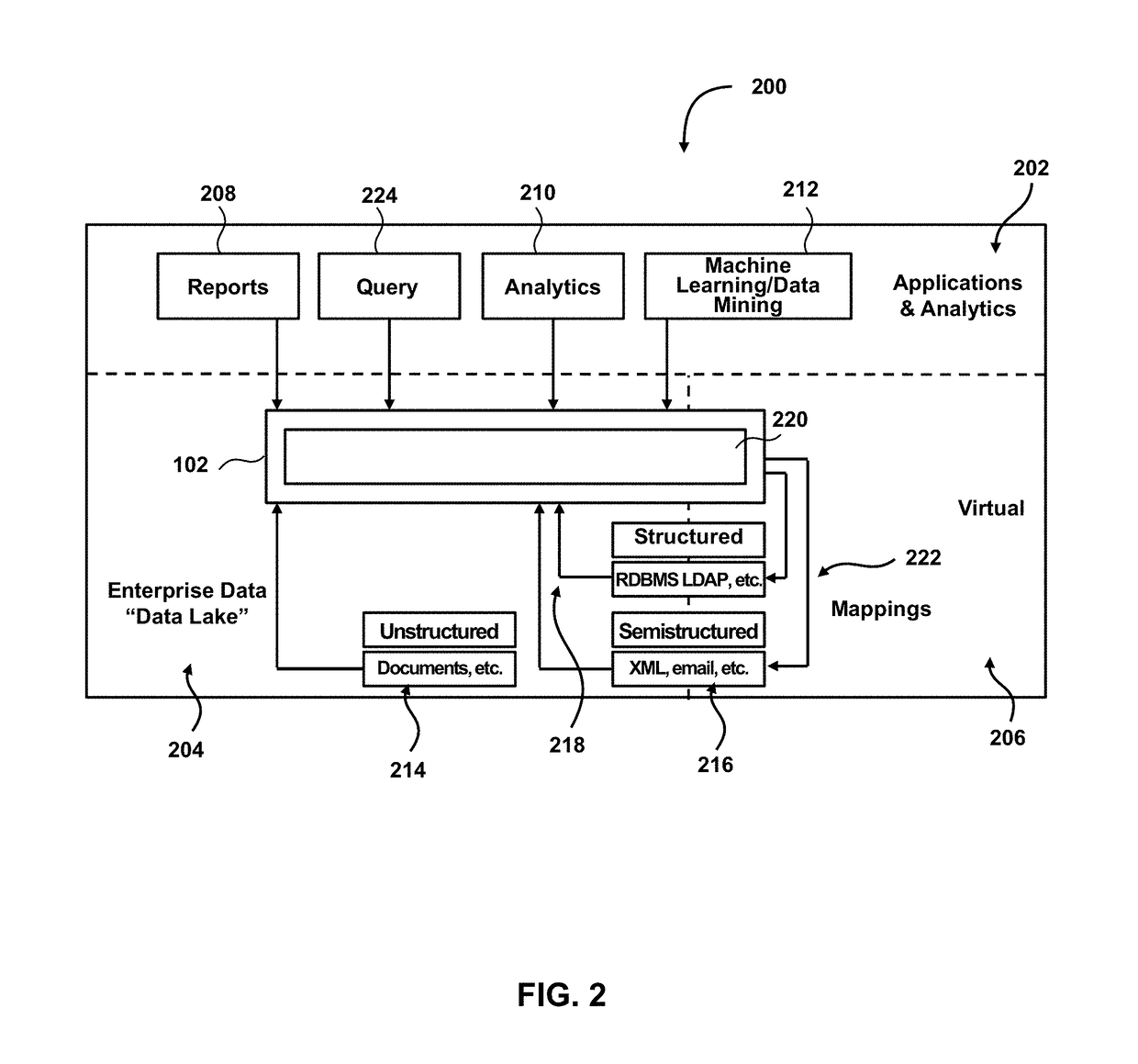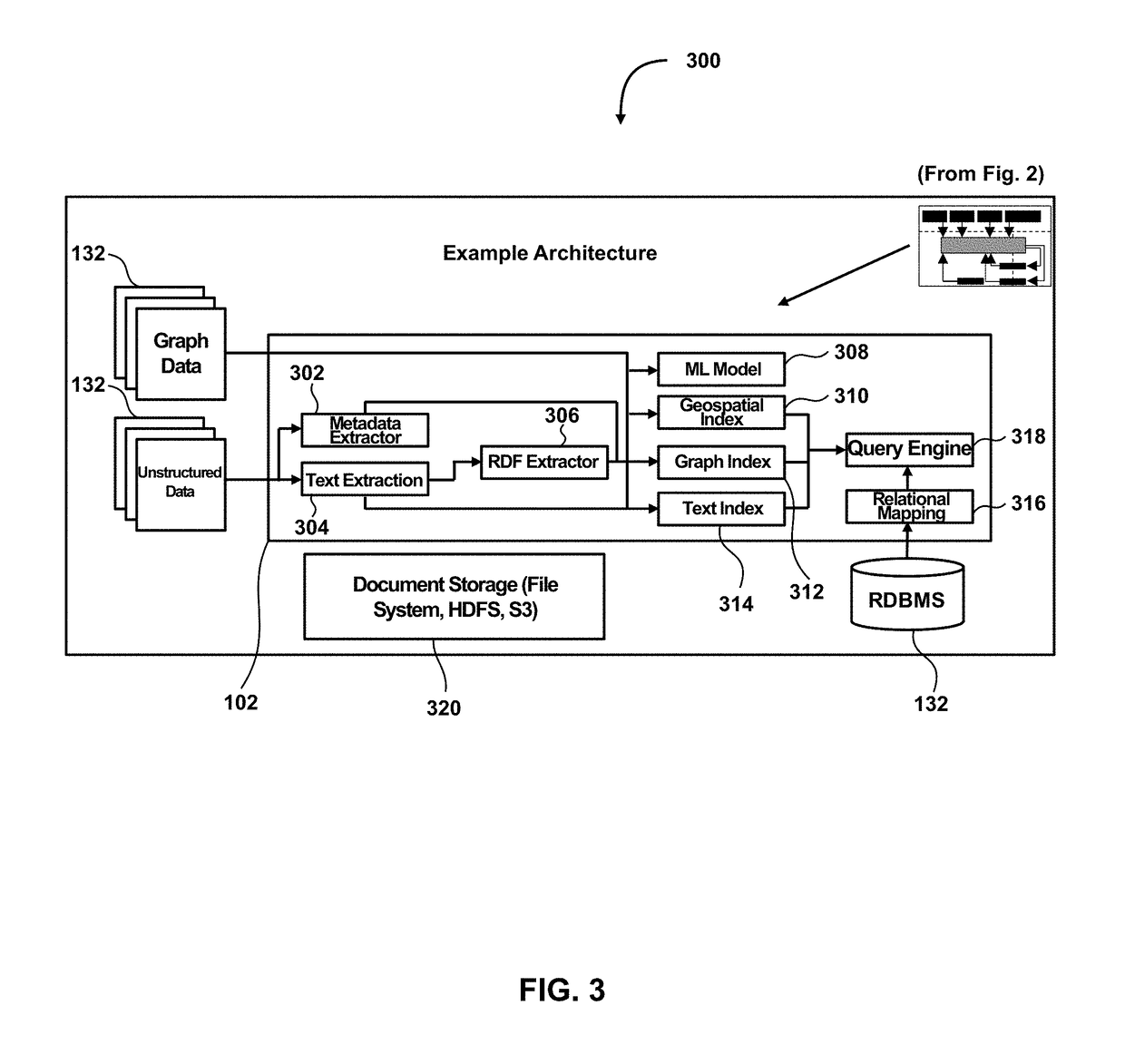System and method for reducing query-related resource usage in a data retrieval process
a data retrieval and query-related technology, applied in the field of facilitating multi-sourcetype interoperability and information retrieval optimization, can solve problems such as the prediction of satisfaction issues, and achieve the effect of facilitating multi-source-type queries, and reducing query-related resource usage in data retrieval processes
- Summary
- Abstract
- Description
- Claims
- Application Information
AI Technical Summary
Benefits of technology
Problems solved by technology
Method used
Image
Examples
embodiment 1
2. The method of embodiment 1, wherein the graph data representations of the given graph database comprises graph nodes or edges connecting the graph nodes.
3. The method of any of embodiments 1-2, further comprising: obtaining second modeling information related to a second graph data model, the second modeling information comprising second templates for converting second data representations not compatible with a second graph database to graph data representations compatible with the second graph database; providing one or more templates of the second templates and the second data representations to the machine learning model for the machine learning model to predict one or more additional templates of the second templates, the machine learning model being configured to predict the one or more additional templates of the second templates without reliance on the one or more additional templates of the second templates; and providing the one or more additional templates of the second...
embodiment 3
4. The method of embodiment 3, wherein the first data representations and the second data representations are compatible with a same database.
5. The method of embodiment 3, wherein the first data representations is compatible with a first non-graph database, and wherein the second data representations are compatible with a second non-graph database and not compatible with the first non-graph database.
6. The method of embodiment 3, wherein the first data representations or the second data representations are compatible with at least one graph database.
7. The method of any of embodiments 1-6, further comprising: obtaining graph information related to nodes and edges of a graph in the given graph database, the graph information indicating data representation sets, each data representation set of the data representation sets comprising nodes and edges connecting the nodes; for each data representation set of the data representation sets, providing one or more nodes or edges of the data ...
embodiment 7
8. The method of embodiment 7, further comprising: performing, via the machine learning model, traversal of the graph to process nodes or edges of the graph to cause the machine learning model to generate new nodes or edges for the graph; and adding the new nodes or edges from the machine learning model to the graph.
PUM
 Login to View More
Login to View More Abstract
Description
Claims
Application Information
 Login to View More
Login to View More - R&D
- Intellectual Property
- Life Sciences
- Materials
- Tech Scout
- Unparalleled Data Quality
- Higher Quality Content
- 60% Fewer Hallucinations
Browse by: Latest US Patents, China's latest patents, Technical Efficacy Thesaurus, Application Domain, Technology Topic, Popular Technical Reports.
© 2025 PatSnap. All rights reserved.Legal|Privacy policy|Modern Slavery Act Transparency Statement|Sitemap|About US| Contact US: help@patsnap.com



